|
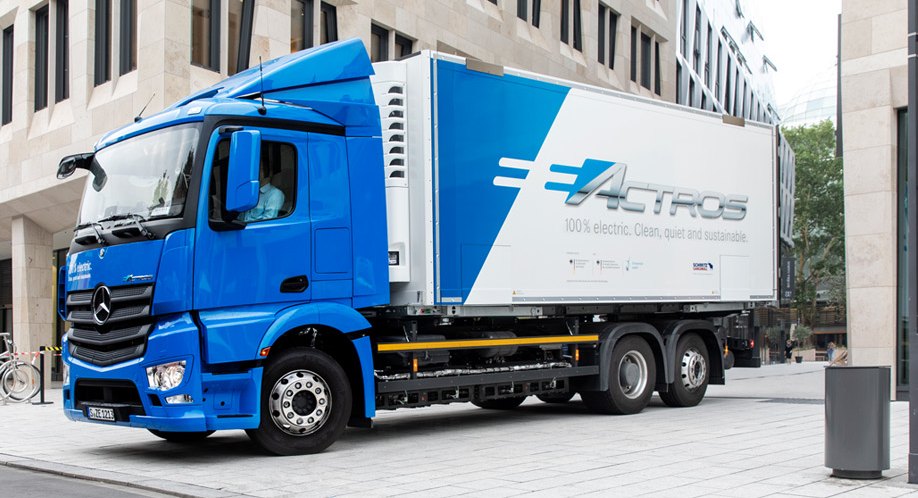
The
Mercedes Actros is an advanced electric truck, not yet with instant battery
cartridge refuelling, but it could be.
An
electric vehicle is a vehicle
whose motion is provided by electric
motors. The motion may be provided either by wheels or propellors
driven by rotary motors, or in the case of tracked vehicles, by linear
motors. The electrical
energy
used to power the motors may be obtained from a direct connection to
land-based generation plants, as is common in electric trains; from
chemical energy stored on the vehicle in batteries or diesel fuel; from
nuclear energy, on nuclear submarines and aircraft carriers; or more
esoteric sources such as flywheels, wind and solar.
The
reasons electric motors are used to drive vehicles are their fine
control, high efficiency and simple mechanical construction. Electric
motors often achieve 90% conversion efficiency over the full range of
speeds and power output and can be precisely controlled. Electric motors
can provide torque whilst not moving, unlike internal
combustion engines, and do not need gears to match power curves.
This removes the need for gearboxes,
torque
convertors and differentials.
Electric motors also have the unusual ability to convert movement energy
back into electricity, through regenerative
braking. This can be used to reduce the wear on brake systems, and
reduce the total energy requirement of a journey.
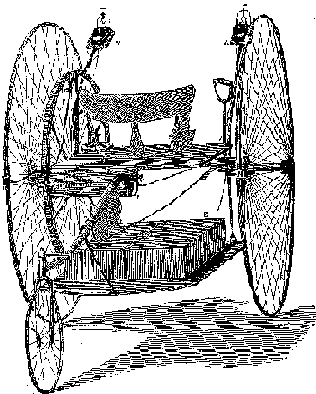
The Ayrton & Perry
electric Trike of 1881
Most
electric transport is directly connected to stationary sources of energy
through the grid. Due to the extra infrastructure and difficulty in
handling arbitrary travel, most directly connected vehicles are owned
publicly or by large companies. These forms of transportation are
covered in more detail in maglev
trains, metros,
trams, trains
and trolleybuses.
A hypothetical electric vehicle design is Personal
rapid transit, a cross between cars and trains optimised for
independent travel.
In
most systems the motion is provided by a rotary electric motor. However,
some trains unroll their motors to drive directly against a special
matched track. These are called linear motor trains. Often these are
also magnetic
levitation trains, floating above the rails through magnetic force.
Note that the levitation and the forward motion are independent effects:
while the forward motive forces still require external power, Inductrack
achieves levitation at low speeds without any.
Chemical
energy is the most common independent energy source. Chemical energy is
converted to electrical energy, which is then regulated and fed to the
drive motors. Chemical energy is usually in the form of diesel
or petrol.
The fuel is usually converted into electricity by a generator
powered by an internal combustion engine or other heat
engine. This approach is known as diesel-electric
or gas-hybrid
locomotion.
Another
form of chemical to electrical conversion is electro-chemical. This
includes fuel
cells and batteries.
By avoiding an intermediate mechanical step the conversion efficiency is
dramatically improved over the
chemical-thermal-mechanical-electrical-mechanical process already
discussed. This is due to the higher carnot efficiency through directly
oxidising the fuel and by avoiding several unnecessary energy
conversions. Furthermore, electro-chemical batteries conversions are
easy to reverse, allowing electrical energy to be stored in chemical
form.
Despite
the higher efficiency, electro-chemical vehicles have many technical
issues which prevent them from replacing the more cumbersome heat
engines. Heat engines have been easier to scale up, with the largest
electrical generators always being driven by heat engines. Fuel cells
are fragile, sensitive to contamination, and require external reactants
such as hydrogen.
Batteries require highly refined and unstable chemicals that could be
harmful to the environment and must be recycled to minimize their impact
and maximize their sustainability through material reuse. Both have
lower energy
and power
density than heat engines.
For
especially large electric vehicles, namely submarines
and aircraft
carriers, the chemical energy of the diesel-electric can be replaced
by a nuclear
reactor. The nuclear reactor usually provides heat, which drives a steam
turbine, which drives a generator, which is then fed to the
propulsion.
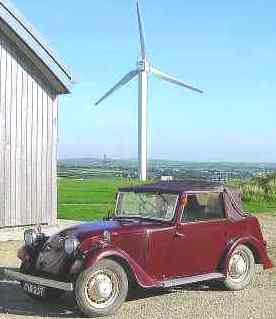
A 1936 electric
Wilson with wind turbine in the background
There
have been a number of experiments using flywheel
energy storage in electric vehicles. The flywheels
store energy as rotation, which is converted to electricity via a
generator, which then drives the wheel motors. It might seem odd to
convert rotational energy to electrical energy, only to convert it back,
but flywheels need to spin very fast to store enough energy to be
useful, and it is easier to use electricity to convert the motion to
something suitable for the vehicle.
There
are two commonly available electric vehicle designs for automobiles: Battery
Electric Vehicles or BEVs, which convert chemical energy to
electrical energy in batteries; and Hybrid
vehicles, which convert chemical energy to electrical energy via an
internal combustion engine and a generator.
Other
light personal mobility devices include electric wheelchairs,
the Segway
HT, electric
scooters, electric
assist bicycles, golf
carts and neighborhood
electric vehicles. Working electric vehicles include heavy work
equiptment, fork
lifts, and numerous other service and support vehicles. Strictly
technology-proving experimental or solar
powered vehicles include sun
racers, electrathons,
the aerial Helios
Prototype, and some rocket
propulsion systems such as the ion
thruster.
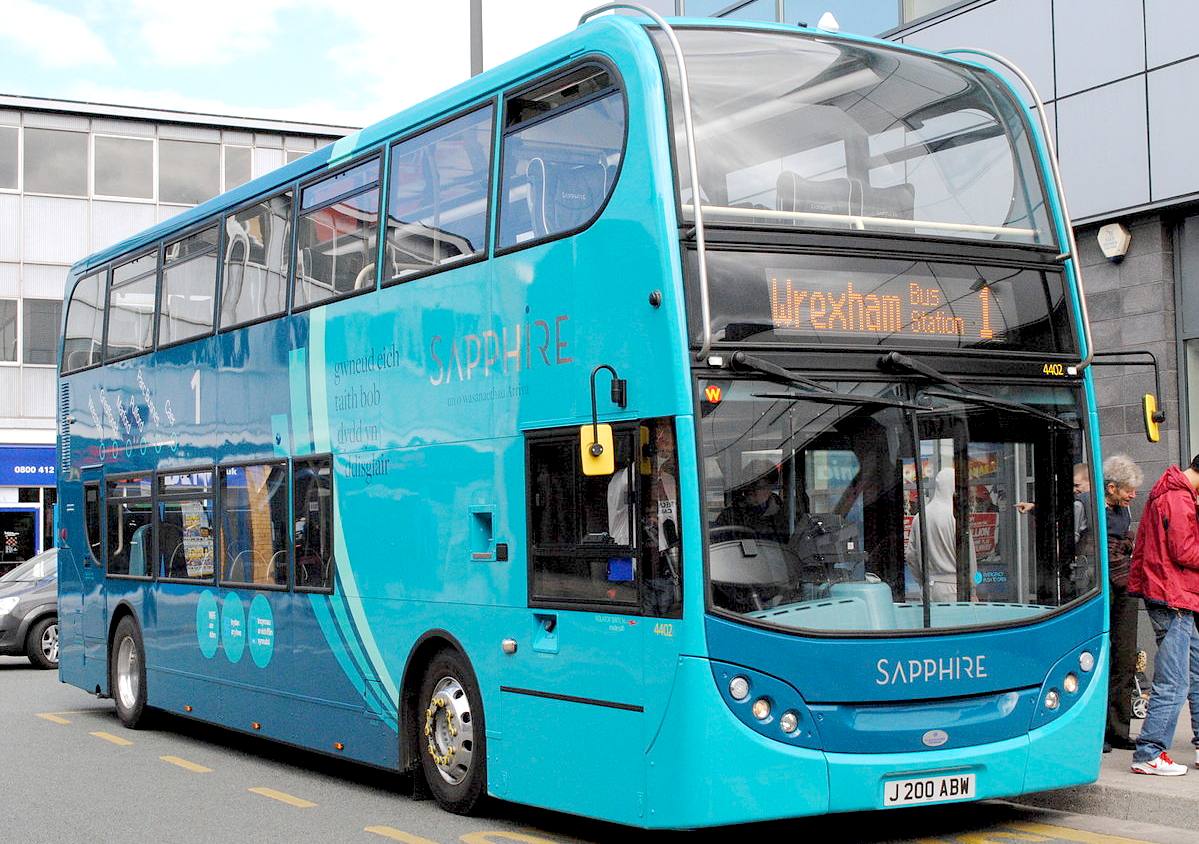
This
city bus is electric, not yet with fitted with instant battery
cartridge refuelling, but it could be.
MAKES
OF ELECTRIC BUSES & COACHES
-
BDY
-
ASHOK
LEYLAND
MAKES
OF ELECTRIC
TRUCKS
-
DAF
-
Renault
-
MAN
-
Mercedes
Benz
-
Volkswagen
-
Volvo
HISTORY
Electric
motive power started with a small railway operated by a miniature
electric motor, built by Thomas
Davenport in 1835. In 1838 a Scotsman named Robert Davidson built an
electric locomotive that attained a speed of four miles an hour. In
England a patent was granted in 1840 for the use of rails as conductors
of electric current, and similar American patents were issued to Lilley
and Colten in 1847. http://mikes.railhistory.railfan.net/r066.html
Between
1832 and 1839 (the exact year is uncertain), Robert Anderson of Scotland
invented the first crude electric carriage, powered by non-rechargable Primary
cells.
By
the 20th century electric cars and rail transport were commonplace, with
commercial electric automobiles having the majority of the market.
Electrified trains were used for coal transport as the motors did not
use precious oxygen in the mines. Switzerland's lack of natural fossil
resources forced the rapid electrification of their rail
network.
Electric
vehicles were among the earliest automobiles, and before the preeminence
of light, powerful internal
combustion engines, electric automobiles held many vehicle land
speed and distance records in the early 1900s. They were produced by Anthony
Electric, Baker
Electric, Detroit
Electric, and others and at one point in history out-sold
gasoline-powered vehicles.
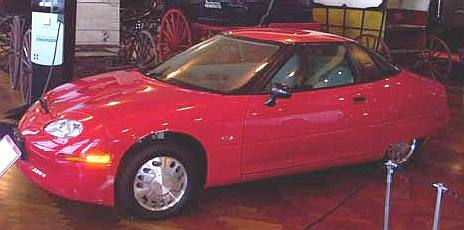
General
Motors GM EV1
ACCEPTANCE
ISSUES
The
Achilles heel of electric cars is range and price. Everybody wants
one, especially those who live in congested cities. The very latest
car with a respectable city range and very fast charge time is the
Kity 301, seen below in white.
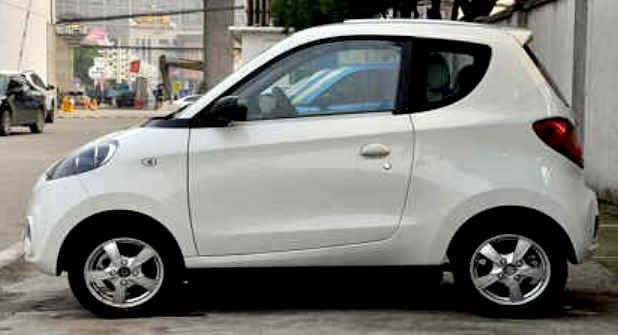
The
Kity 301 is a two seat, two door hatchback that could retail around the £7,500
mark with car tax, to make it one of the
most economical to buy city cars in the UK. The range is likely to be
50-60 miles on a single charge at city speeds, with fast charging in
around 20 minutes and a top speed more than enough to cope with fast
moving city traffic.
HOME
CHARGING POINTS & FAST CHARGE
You
may be able to get a home charging outlet fitted free of charge,
subject to conditions.
GOVERNMENT
INCENTIVES
There
may be Goverment backed incentive schemes to help offset the cost of
replacing your existing petrol or diesel car.
CITY
EV CARS - COMPARISON CHART @ WIKIPEDIA
|
Kewet
Buddy
|
80 km/h
(50 mph)
|
3
|
6–8
hours.
|
40–80 km
(25–50 mi)
|
January
2010
|
|
Citroën
C1 ev'ie
|
97 km/h
(60 mph)
|
4
|
6–7
hours
|
100
to 110 km (60 to 70 mi)
|
30
April 2009 UK only
|
|
CityEl
|
63 km/h
(39 mph)
|
1
|
8
hours (complete recharge)
|
80–90 km
(50–56 mi)
|
First
manufactured in Denmark 1987 under the name of
"Mini-el" until 1992.
New production started in 1995 by a German company.
|
|
Mia
electric
|
100 km/h
(62 mph)
|
1
to 4 adults
|
3
to 5 hours when charged from household
|
125 km
(78 mi)
|
Available
in Belgium, Netherlands, Luxembourg, Germany,
Italy, France, United Kingdom, Norway, Czech Republic,
South Africa, Mexico
|
|
MyCar
|
64 km/h
(40 mph)
|
2
|
5
to 8 hrs
|
64–110 km
(40–68 mi)
|
|
|
NICE
Mega City
|
64 km/h
(40 mph)
|
4
|
8
hours.
|
96 km
(60 mi)
|
October
2006.
|
|
QBeak
|
90 km/h
(56 mph)
|
4
adults
|
8
hrs
|
250 km
(155 mi)
|
Available
in Denmark
for now.
|
|
Stevens
Zecar
|
90 km/h
(56 mph)
|
5
|
6–8
hours.
|
80 km
(50 mi)
|
March
2008.
|
|
HIGHWAY
CAPABLE EVs @ WIKIPEDIA
|
BEV
Electron
|
110 km/h
(68 mph)
|
0–100 km/h
(62 mph) in 7 seconds
|
5
adults
|
9
hrs with onboard charger
1.5
hrs with external charger
|
120 km
(75 mi)
|
Available
in Australia only.
|
|
BMW
i3
|
150 km/h
(93 mph)
|
0–100 km/h
(62 mph) in less than 8 seconds
|
4
adults
|
4h
with the 240-volt charging unit or less than 30
minutes at public DC charging stations (when charging
from 0 to 80%)
|
130
to 160 km (81 to 99 mi)
|
Released
in Europe in 2013.
A gasoline-powered range extender option is available
to increased range to 240 to 300 km (150 to 190 mi)
|
|
BMW
Brilliance Zinoro 1E
|
130 km/h
(81 mph)
|
|
|
|
150 km
(93 mi)
|
Released
in China in early 2014.
|
|
BYD
e6
|
140 km/h
(87 mph)
|
0–100 km/h
(62 mph) in < 8 seconds
|
5
adults
|
|
300 km
(186 mi)
|
Field
testing as taxi fleet began in Shenzhen, China
in May 2010.
|
|
Chery
QQ3 EV
|
|
|
|
|
|
Launched
in China in March 2010
|
|
Chevrolet
Spark EV
|
|
|
|
|
132 km
(82 mi)
|
The
first all-electric car from General Motors after the
GM EV1. It was released in limited quantities in the
U.S. in selected markets in California and Oregon in
June 2013.
|
|
Citroën
C-Zero
|
130 km/h
(81 mph)
|
0–100 km/h
(62 mph) in 15.9 seconds.
|
4
adults
|
7
hours when charged from household; 30 minutes when
charging from a quick charger system
|
150 km
(93 mi)
|
Available
in Europe.
|
|
Fiat
500e
|
88 mph
(142 km/h)
|
0-60 mph
(97 km/h) in 8.5 seconds.
|
|
|
87 mi
(140 km)
|
Available
in California only
|
|
Ford
Focus Electric
|
135 km/h
(84 mph)
|
0–97 km/h
(60 mph) in 10.2 seconds.
|
5
adults
|
18
to 20 hours when charged from 120v outlet; 3 to 4
hours when charged from 240V outlet.
|
122 km
(76 mi)
|
Available
in the U.S. since December 2011; available in Europe
since August 2013.
|
|
Honda
Fit EV
|
148 km/h
(92 mph)
|
0-97 km/h
(60 mph) in 9.5 seconds.
|
|
|
132 km
(82 mi)
|
|
|
JAC
J3 EV
|
|
|
|
|
|
Launched
in China in 2010
|
|
Kia
Soul EV
|
|
|
|
|
150 km
(93 mi) EPA,
130 to 190 km (81 to 118 mi) Kia
|
2014
|
|
Lightning
GT
|
200 km/h
(124 mph)
|
0–100 km/h
(62 mph) in < 5 seconds.
|
2
adults
|
under
an hour
|
240 km
(149 mi)
|
2013
|
|
Mia
electric
|
100 km/h
(62 mph)
|
|
1
to 4 adults
|
3
to 5 hours when charged from household
|
125 km
(78 mi)
|
Available
in Belgium, Netherlands, Luxembourg, Germany, Italy,
France, United
Kingdom, Norway, Czech Republic, South
Africa, Mexico
|
|
Mitsubishi
i-MiEV
|
130 km/h
(81 mph)
|
|
4
adults
|
7
to 14 hours when charged from household, depending on
the type of power; 30 minutes when charging from a
quick charger system (80% charged)
|
170 km
(106 mi)
|
Released
in Japan in July 2009 for fleet customers. Available
in Japan,
Hong
Kong, Australia,
Europe, the U.S., Canada and some Latin American
countries. As of July 2014, global sales reached
32,000 units, including the rebadged variants Peugeot
iOn and Citroën C-Zero sold in Europe.
|
|
Morgan
Plus E
|
185 km/h
(115 mph)
|
0–100 km/h
(62 mph) in 6 seconds.
|
2
adults
|
|
|
|
|
Nissan
Leaf
|
150 km/h
(93 mph)
|
|
5
adults
|
up
to 20 hours when charged from 110/120v outlet; 8 hours
when charging from 220/240 volt outlet; 30 minutes for
440v "quick charge" (to 80% of battery
capacity)
|
EPA
rating 117 km (73 mi); 2013 model: 121 km
(75 mi) EPA / 200 km (120 mi) NEDC
|
Released
in the U.S. and Japan in December 2010, is available
in 35 countries. The Leaf is the top selling electric
car ever, with global sales of 125,000 units by July
2014.
|
|
Renault
Fluence ZE
|
135 km/h
(84 mph), electronically limited
|
|
5
adults
|
battery
swap in 5 minutes
|
135 km
(84 mi) + 15 km limp home mode
|
Released
in France in 2010, Israel in Jan 2012, UK in Jan 2012,
Turkey in May 2012.
|
|
Renault
Zoe
|
135 km/h
(84 mph), electronically limited
|
0–100 km/h
(62 mph), in 13.5 seconds
|
5
adults
|
six
to nine hours with 3.7 kW, 30 minutes with 43 kW (80 %)
|
210 km
(130 mi)
|
Released
in France in December 2012
|
|
Smart
electric drive second gen
|
|
|
|
|
|
Released
in 2013
|
|
Tesla
Model S
|
P85
kW·h
214 km/h (133 mph)
85 kW·h
201 km/h (125 mph)
60 kW·h
193 km/h (120 mph)
|
P85 kW·h
0–97 km/h
(60 mph) in 4.2 seconds
85 kW·h
0–97 km/h (60 mph) in 5.6 seconds
60 kW·h
0–97 km/h (60 mph) in 5.9 seconds
|
5
adults + 2 kids (optional)
|
battery
swap in 1.5 minutes; 50% in about 20 minutes by Tesla
Superchargers
|
85 kW·h
426 km (265 mi) (EPA)
483 km (300 mi) (Tesla Motors)
60 kW·h
335 km (208 mi) (EPA)
370 km (230 mi) (Tesla Motors)
|
Available
in the United States, Canada, Europe, China and Hong
Kong. As of June 2014, a total of 39,163 units have
been delivered.
|
|
Venturi
Fétish
|
200 km/h
(124 mph)
|
0–100 km/h
(62 mph) in 4 seconds.
|
2
adults
|
3
hours with external charge booster, 8 hours with
onboard charging system
|
340 km
(211 mi)
|
2006
to present
|
|
Volkswagen
e-Up!
|
130 km/h
(81 mph)
|
|
4
adults
|
2.3 kW
plugged into any standard 230V socket, 3.6 kW via
a home-installed wall box or with up to 40 kW
plugged into a DC fast-charging station
|
160 km
(99 mi)
|
Relea
|
|
EV
UNIT COST COMPARISON & OTHER DETAILS @ WIKIPEDIA
|
Model
|
Type
of
PEV(1)
|
Original
MRSP(2)
/Lease per month
(current $)
|
Range
(EV mode
for PHEVs)
|
Comments
|
|
Models
currently available in some markets
(2007–2014)
|
|
Buddy
|
BEV
|
144,900
kroner
(~US$24,000)
to
186,850 kroner
(~US$30,500)
|
50 mi
(80 km)(Lead-acid battery)
75 mi (121 km) (NiMH battery)
|
A
total of 754 units have been sold in Norway between
2008 and the first quarter of 2013. Since its
inception in 1991, combined sales of the Kewet and
Buddy totaled about 1,500 units through October 2013,
mainly in Norway.
|
|
Mitsubishi
i-MiEV Peugeot iOn and Citroën
C-ZERO
|
BEV
|
4
million yen
(~US$43,000)
to US$29,125
(US)
|
100 mi
(160 km)
|
Fleet
leasing began in July 2009, and sales to the public
began in Japan in April 2010, followed by Hong Kong
and Australia
in 2010, and several European countries, Costa Rica,
Chile, Canada and the U.S. in 2011. |
|
Chery
QQ3 EV
|
BEV
|
CN¥40,000
(~US$6,480)
after
incentives
|
100 km
(62 mi)
|
Deliveries
began in China in March 2010. Sales during 2012
totaled 5,305 units, making the QQ3 EV the best
selling all-electric car in China in 2012, with a
market share of 44% of total electric cars sales that
year. Cumulative sales since January 2012 reached
9,512 units through October 2013.
|
|
JAC
J3 EV
|
BEV
|
CN¥158,000
(~US$25,595)
|
130 km
(81 mi)
|
Launched
in China in 2010. Cumulative sales reached 4,068 units
through December 2012.
A third generation model, called JAC J3 iev, was
launched in September 2012.
|
|
Tazzari
Zero
|
BEV
|
€20,300
(~US$29,200)
GB£21,500
(~US$34,850)
|
140 km
(87 mi)
|
Sales
began in several European countries in 2010.
A total of 34 units were sold in Norway in 2011.
|
|
Nissan
Leaf
|
BEV
|
US$32,780(4)
(MY 2011)
US$36,020
(MY 2012)
US$29,650
(MY 2013)
|
MY
2011/12
73 mi (117 km
MY 2013
75 mi (121 km)
MY 2014/15
84 mi (135 km)
|
About
140,000 Leafs have been sold worldwide since December
2010, making the Nissan Leaf the world's best-selling
highway-capable electric car in history. The United
States is the top selling market with 63,944 units
sold through September 2014, followed by Japan with
45,342 units, and Europe with over 28,000 units. The
European market leader is Norway with 11,020 new Leafs
sold and over 14,600 units registered (includes over
3,000 used imports) as of September 2014, followed by
the UK with 6,115 units sold, and France with 3,302
units.
|
|
Chevrolet
Volt
|
PHEV
|
US$41,000
(MY 2011)
US$39,995
(MY 2012)
US$34,995
(MY 2014)
|
35 mi
(56 km)
|
As
of September 2014, the Volt and Ampera models have
combined global sales of over 83,600 units. Volt sales
are led by the United States with 69,092 units sold,
followed by Canada with 3,725 units, and the
Netherlands with 1,060 units registered. A total of
9,334 Opel/Vauxhall Amperas have been sold in Europe
through August 2014, with the Netherlands as the
leading market with 4,970 Amperas registered as of
September 2014 followed by Germany with 1,493 Amperas
sold through September 2014.
|
|
Smart
electric drive
|
BEV
|
2nd
generation
Leasing only
GB£375/month (UK)
US$599/mo
(US)
3rd generation
US$25,750
(US)
|
2nd
generation
63 mi (101 km)
3rd generation
90 mi (140 km)[
|
More
than 8,800 units have been sold in North America and
Europe through June 2014. This figure includes over
2,300 units of the second generation models leased in
18 markets around the world between 2009 and October
2012. Of these, 1,721 units were registered in Europe
through October 2012,and 527 units in the U.S. through
December 2012. During 2013 a total of 4,130 units of
the third generation were sold worldwide. Over 6,500
units of the third generation have been sold through
June 2014. As of June 2014, combined sales of both
generations reached 3,959 units in Germany, 2,542
units in the U.S. and 865 units in France.
|
|
Wheego
Whip LiFe
|
BEV
|
US$32,995
|
100 mi
(160 km)
|
U.S.
sales began in April 2011. A total of 34 units have
been sold by March 2012.
|
|
Volvo
C30 DRIVe Electric
|
BEV
|
€1,500/mo
(US$1,955)
Leasing only
|
93 mi
(150 km)
|
A
total of 209 units have been leased in Europe through
October 2012. Since 2011 a total of 149 units have
been delivered in Sweden through March 2013.
|
|
BYD
e6
|
BEV
|
369,800
RMB
~US$32,995
|
190 mi
(310 km)
|
Sales
to the general public began in October, 2011, in
Shenzhen, China. A total of 33 units were sold in
2010, 401 during 2011, and cumulative sales in China
reached 5,059 units through June 2014.
|
|
Bolloré
Bluecar
|
BEV
|
€19,000
(US$24,850) +
€80/mo (US$105)
fee for the battery
(VAT not included)
|
250 km
(160 mi)
|
Retail
sales began in February 2013. Owners can access the
Autolib' network of charging stations around Paris for
an optional monthly fee of €15 (US$20).
A
total of 3,302 units have been registered in France
through July 2014, with over 2,000 units deployed for
the Autolib' carsharing program. The Bolloré Bluecar
was the top selling highway-capable electric car in
the French market in 2012.
|
|
Ford
Focus Electric
|
BEV
|
US$39,995
|
76 mi
(122 km)
|
U.S.
Deliveries for fleet customers began in December 2011
and to retail customers in May 2012. Initially sales
are limited to New York, New Jersey and California. A
total of 3,965 units have been delivered in the U.S.
through September 2014.
|
|
BMW
ActiveE
|
BEV
|
Leasing
only
US$499/month for 24 months + US$2,250 downpayment
|
94 mi
(151 km)
|
Field
testing in the U.S. began in January 2012, after the
Mini E trial ended. Available only in Los Angeles, New
York, San Diego, San Francisco, Sacramento, Boston,
and select markets in Connecticut. This is a
demonstration program only with no plans for a
production version. The ActiveE was followed by
mass-production of the BMW
i3 electric car. A total of 671 units were leased
in the U.S. through September 2013.
|
|
Renault
Fluence Z.E.
|
BEV
|
205,000
DKK (€27,496) +
a monthly fee
for the battery
|
100 mi
(160 km)
|
Since
2010 a total of 3,459 units have been sold worldwide
through May 2013, with 2,068 registered in Europe. In
France, 725 units have been registered through June
2014. The battery leasing service is provided by
Renault.
The
Fluence Z.E. was the only electric car deployed within
the Better
Place network in Israel and Denmark. Less than
1,000 units were deployed in Israel and around 400
units in Denmark through May 2013, when the company
filed for bankruptcy.
|
|
Toyota
Prius Plug-in Hybrid
|
PHEV
|
US$32,000
(base) to
US$39,525
(advanced)
|
11 mi
(18 km)
|
As
of September 2014, global sales totaled 65,300 units,
with the United States as the market leader with
36,680 units delivered, followed by Japan with about
19,100 units, and Europe with around 9,100 units. The
leading European markets are the Netherlands with
3,955 units registered as of August 2014, followed by
the UK with 1,089 units registered as of March 2014
and Sweden with 1,053 units registered as of September
2014.
|
|
Tesla
Model S
|
BEV
|
US$95,400
to US$105,400
(premium)
US$57,400 to US$77,400
(base)
|
265 mi
(426 km)
(model with
85 kWh pack)
208 mi (335 km)
(model with
60 kWh pack)
|
About
47,000 units have been sold worldwide as of September
2014. Sales are led by the United States with about
31,500 units delivered through September 2014,
followed by Norway with 5,518 units, China with about
2,800 units, the Netherlands with 2,150 units
registered as of September 2014, and Canada with 1,200
units sold through August 2014.
|
|
Honda
Fit EV
|
BEV
|
Leasing
only
US$389/month
for 3 years
|
82 mi
(132 km)
|
A
total of 1,007 units have been leased in the U.S.
through September 2014. In July 2014 Honda announced
the end of production of the Fit EV for the 2015
model, together with the Honda Insight hybrid and the
Honda FCX Clarity hydrogen
fuel-cell car.
The
Fit EV was released through leasing to local
government and corporate customers in Japan in August
2012. Availability in Japan is limited to 200 units
during its first two years.
|
|
RAV4
EV second generation
|
BEV
|
US$49,800
|
103 mi
(166 km)
|
Produced
jointly by Toyota and Tesla
Motors. Initial production will be limited to
2,600 units through 2014 and is available only in
California. The battery supply deal between Toyota and
Tesla is set to conclude by the end of 2014.
A
total of 2,255 units have been sold in the U.S.
through September 2014.
|
|
Ford
C-Max Energi
|
PHEV
|
US$33,745
|
20 mi
(32 km)
|
Over
16,200 units have been sold in North America through
September 2014, with 16,014 units delivered in the
U.S. through September 2014 and 199 units in Canada
through December 2013.
|
|
Renault
Zoe
|
BEV
|
€20,700
(US$27,250) +
a monthly fee for the battery
|
210 km
(130 mi)
|
The
cost of leasing the battery for 36 months starts from
€79/month (US$104/month).
Global
sales passed the 10,000 unit milestone in February
2014. As of June 2014, sales are led by France with
7,637 units, followed by Germany with 1,532 units, and
the Netherlands with 632 units. Cumulative global
sales reached 12,631 units through June 2014.
|
|
Volvo
V60 Plug-in Hybrid
|
PHEV
|
~
€50,000
~ GB£40,000
|
50 km
(31 mi)
|
Over
11,000 units have sold in Europe through May 2014. As
of June 2014, sales are led by the Netherlands with
8,231 units, followed by Sweden with 931 units
delivered.
|
|
Honda
Accord Plug-in Hybrid
|
PHEV
|
US$39,780
|
13 mi
(21 km)
|
A
total of 835 units have been sold in the U.S. through
September 2014. The Accord PHEV was introduced in
Japan in June 2013 and it is available only for
leasing, primarily to corporations and government
agencies. As of December 2013, the Accord PHEV ranks
as the third best selling plug-in hybrid in the
Japanese market. |
|
Mitsubishi
Outlander P-HEV
|
PHEV
|
¥3,324,000
US$36,650
to ¥4,297,000 (US$47,380)
|
60 km
(37 mi)
|
As
of June 2014, about 33,000 units have been sold
worldwide, led by the European market with over 17,235
units. As of August 2014, the largest country market
is Japan with 16,518 units sold, followed by the
Netherlands, the top European market, with 14,195
units registered, Sweden with 1,692 units, and Norway
with 1,092 units by mid-September 2014. The Outlander
P-HEV was the top selling plug-in electric vehicle in
Europe during the first half of 2014.
|
|
Roewe
E50
|
BEV
|
CN¥234,900
(US$37,589)
|
180 km
(110 mi)
|
Available
only in China, with 238 units sold in 2012 and 7 units
during the first half of 2013. Deliveries began in
Shanghai in January 2013.
|
|
Ford
Fusion Energi
|
PHEV
|
US$39,495
(Feb 2013)
US$35,525
(Jan 2014)
|
20 mi
(32 km)
|
Released
in the U.S. in February 2013.
Over
15,500 units have been sold in North America through
September 2014, with 15,412 units delivered in the
U.S. through September 2014 and 116 units in Canada
through December 2013.
|
|
Mahindra
e2o
|
BEV
|
Rs
7.0 lakh
(US$12,900)
to
Rs 8.5 lakh
(US$15,670)
|
100 km
(62 mi)
|
About
400 units have been sold in India, Nepal and Sri Lanka
by mid November 2013.
|
|
Chevrolet
Spark EV
|
BEV
|
US$27,495
|
82 mi
(132 km)
|
The
Spark EV was released in South Korea in October 2013.
1,303 units have been sold in the U.S. market through
July 2014.
|
|
Mercedes-Benz
SLS AMG Electric Drive
|
BEV
|
€416,500
(US$544,236)
in Germany
|
250 km
(160 mi)
|
Limited
production. Sales began in Europe in June 2013.
|
|
Fiat
500e
|
BEV
|
US$32,500
|
87 mi
(140 km)
|
Launched
in July 2013, the 500e is initially available only in
California. About 1,490 units sold in the U.S. through
July 2014. |
|
McLaren
P1
|
PHEV
|
GB£866,000
(~ US$1,350,000)
|
19 mi
(31 km)
|
Deliveries
to retail customers started in the UK in October 2013.
Production is limited to 375 units to maintain
exclusivity. The entire production was sold out by mid
November 2013.
|
|
Volkswagen
e-Up!
|
BEV
|
€26,900
(~US$34,500)
|
160 km
(99 mi)
|
A
total of 4,952 e-Up! cars have been sold in Europe
through June 2014. The market leader is Norway, with
921 units registered through February 2014, followed
by the Netherlands with 588 units sold through
December 2013.
|
|
BMW
i3
|
BEV
and
PHEV option
|
€34,950
(US$46,400)
in Germany
US$42,275 in
the U.S.
plus US$3,850
for range-extender option.
|
130
to 160 km (80 to 100 mi)
with range extender
240 to 300 km (150 to 190 mi)
|
Global
sales passed the 10,000 unit milestone in September
2014. Germany is the leading market, with 2,299 units
registered through August 2014, followed by the U.S.
with 2,082 units delivered up to August 2014, and
Norway with 1,536 units registered through August
2014.
|
|
Porsche
Panamera S E-Hybrid
|
PHEV
|
€110,409
in Germany
US$99,000
in the U.S.
|
32 km
(20 mi)
|
As
of December 2013, a total of 90 units had been
delivered in France, 86 units in the United States, 59
in the Netherlands, 14 in Spain, and about 12 in
Germany. Cumulative sales in the U.S. reached 698
units through August 2014. Global sales between
January and August 2014 totaled over 1,500 units,
presenting 9% of all Panamera models sold worldwide.
|
|
Kandi
EV
|
BEV
|
Leasing
only
US$130 to US$160
per month
|
120 km
(75 mi)
|
The
Kandi EV city
car was deployed in 2013 in China as part of the
Kandi EV CarShare, an electric car vending
machine-like carsharing program in the city of
Hangzhou. The car is also available for leasing of
between 1 to 3 years. Sales totaled 5,239 units in the
first half of 2014.
|
|
BYD
Qin
|
PHEV
|
189,800
rmb
(~US$31,000)
|
70 km
(43 mi)
|
Since
December 2013 cumulative sales in China totaled 9,615
units through September 2014.
|
|
Cadillac
ELR
|
PHEV
|
US$75,995
|
35 mi
(56 km)
|
Cumulative
sales in North America reached 812 units up to August
2014, with 780 units sold in the U.S. and 32 units in
Canada.
|
|
BMW
Brilliance Zinoro 1E
|
BEV
|
Leasing
only
7,400 RMB
per month
(~US$1,200)
|
150 km
(93 mi)
|
Only
available for leasing in Beijing and Shanghai.
|
|
Kia
Soul EV
|
BEV
|
42
million won
( ~US$39,400)
in South Korea
US$33,700
in the U.S.
|
93 mi
(150 km)
|
Sales
in South Korea totaled 218 units through June 2014.
|
|
BMW
i8
|
PHEV
|
US$135,925
(~ €103,000
GB£86,800)
|
37 km
(23 mi)(NEDC)
15 mi (24 km) (EPA)
|
A
total of 60 units were delivered in Europe up to June
2014. As of August 2014, registrations in the German
market totaled 160 units.
|
|
Porsche
918 Spyder
|
PHEV
|
US$845,000
|
12 mi
(19 km)
|
A
total of 4 units have been delivered in the U.S.
through July 2014; 3 in the Netherlands up to June
2014; and 2 in Sweden through July 2014.
|
|
Volkswagen
XL1
|
PHEV
|
€111,000
(~US$146,000)
|
50 km
(31 mi)
|
VW
expects its diesel-powered PHEV to achieved 0.9 l/100 km
(260 mpg-US), becoming the most
fuel-efficient car in the world.
|
|
Volkswagen
e-Golf
|
BEV
|
€34,900
(~US$47,800)
in Europe
US$35,445
in the U.S.
|
130
to 190 km (81 to 118 mi)
|
Retail
deliveries began in Europe in May 2014. U.S sales are
slated to start on selected markets in November 2014.
A total of 1,358 Volkswagen e-Golf cars have been sold
in Europe through August 2014, of which, 925 units
were sold in Norway.
|
|
Mercedes-Benz
B-Class Electric Drive
|
BEV
|
US$41,450
|
87 mi
(140 km)
|
Deliveries
began in the U.S. in July 2014. A total of 92 units
have been sold in the U.S. through August 2014.
|
|
Audi
A3 Sportback e-tron
|
PHEV
|
€37,000
US$49,000
|
50 km
(31 mi)
|
Sales
across Europe began in August 2014. Retail sales in
the U.S. are scheduled to begin in early 2015. The
first units were registered in Germany in August 2014.
A total of 250 units have been registered in Germany
as of September 2014.
|
|
Volkswagen
Golf GTE
|
PHEV
|
€36,900
(~US$48,390)
|
50 km
(31 mi)
|
Market
launch in Europe was scheduled for the fourth quarter
of 2014. The first units were registered in Germany in
August 2014. A total of 89 units have been registered
in Germany as of September 2014.
|
|
Mercedes-Benz
S 500 Plug-in Hybrid
|
PHEV
|
€108,945
(~US$146,000)
|
30 km
(19 mi)
|
Deliveries
were scheduled to begin in Europe in September 2014
and early 2015 in the U.S. A total of 17 units have
been registered in Germany as of September 2014.
|
|
Venucia
e30
|
BEV
|
CN¥267,800
(~ US$43,705)
|
160 km
(99 mi)
|
The
Venucia e30 is the Chinese manufactured version of the
Nissan Leaf,
and as such, shares many features of the Leaf,
including bodywork, dimensions, and electric-drive
specifications. Dongfeng Nissan started pilot projects
in Guangzhou, Xiangyang and Dalian in 2013, with a
total of 300 rebadged Leafs deployed since local
production of the Venucia e30 had not began at the
time. |
|
Notes:
PHEV: Plug-in
hybrid vehicle, BEV: Battery
electric vehicle or electric
car. (1) Plug-in conversions are not included. (2)
Sales price does not reflect any government incentives
or tax
credits, except where noted. Prices are shown for
comparison purposes only. Actual price may vary by
country and by dealership.(3) U.S. price (4) US$32,780
is U.S. price, ¥3.76 million (US$40,500) in Japan,
€32,839 (US$40,800) in the Netherlands and €34,955
(US$43,400) in Portugal, all before any government
incentive and exchange rate as of May 18, 2010.
|
|

SMARTCHARGER
- Potentially the world's fastest electric car: 400mph using energy from nature.
Featuring built in battery swapping system, charged using renewable
solar energy. A project in waiting in PR terms.


LINKS
Wikipedia
List_of_electric_cars_currently_available
Wikipedia
List_of_modern_production_plug-in_electric_vehicles
http://en.wikipedia.org/wiki/List_of_electric_cars_currently_available
http://en.wikipedia.org/wiki/List_of_modern_production_plug-in_electric_vehicles
|






